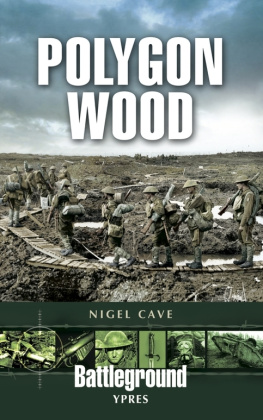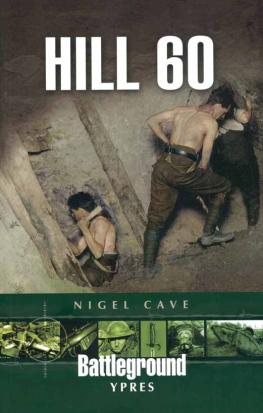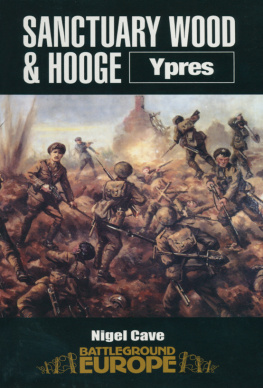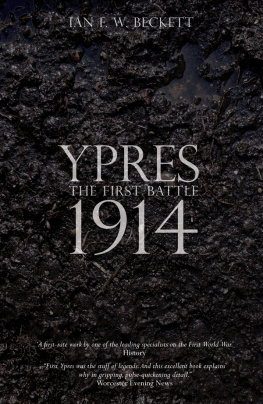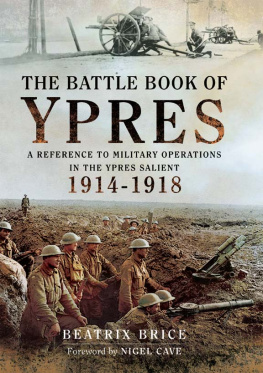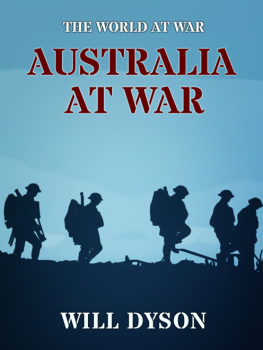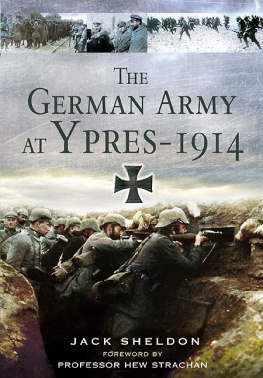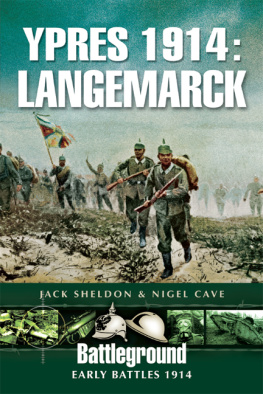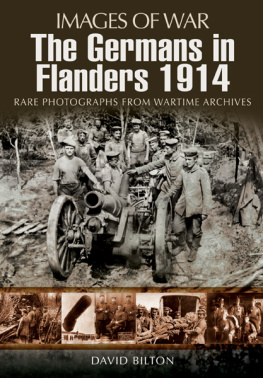Cave - Polygon Wood
Here you can read online Cave - Polygon Wood full text of the book (entire story) in english for free. Download pdf and epub, get meaning, cover and reviews about this ebook. City: Barnsley, year: 2007, publisher: Pen and Sword, genre: Non-fiction. Description of the work, (preface) as well as reviews are available. Best literature library LitArk.com created for fans of good reading and offers a wide selection of genres:
Romance novel
Science fiction
Adventure
Detective
Science
History
Home and family
Prose
Art
Politics
Computer
Non-fiction
Religion
Business
Children
Humor
Choose a favorite category and find really read worthwhile books. Enjoy immersion in the world of imagination, feel the emotions of the characters or learn something new for yourself, make an fascinating discovery.
- Book:Polygon Wood
- Author:
- Publisher:Pen and Sword
- Genre:
- Year:2007
- City:Barnsley
- Rating:3 / 5
- Favourites:Add to favourites
- Your mark:
- 60
- 1
- 2
- 3
- 4
- 5
Polygon Wood: summary, description and annotation
We offer to read an annotation, description, summary or preface (depends on what the author of the book "Polygon Wood" wrote himself). If you haven't found the necessary information about the book — write in the comments, we will try to find it.
Cave: author's other books
Who wrote Polygon Wood? Find out the surname, the name of the author of the book and a list of all author's works by series.
Polygon Wood — read online for free the complete book (whole text) full work
Below is the text of the book, divided by pages. System saving the place of the last page read, allows you to conveniently read the book "Polygon Wood" online for free, without having to search again every time where you left off. Put a bookmark, and you can go to the page where you finished reading at any time.
Font size:
Interval:
Bookmark:
The book has relied heavily on the work of the authors of the Official Historians, most notably that of the great Hertford Historian C.E.W Bean and his team. The Australian Official History is a quite extraordinary document and provides a great wealth of information. The histories of the 7th and 23rd Divisions have also been most helpful. I would like to place on record my grateful thanks to various survivors of 110 (Leicesters) Brigade, whose anecdotal accounts have contributed significantly to the text. The Public Record Office at Kew is a mine of information, and the staff there are tremendously helpful and patient. This is a very user-friendly archive, and anyone interested in the Great War should not be daunted by the sheer bulk of the material and the seeming complexity of the system.
I would like to express my thanks to the various landowners around Polygon Wood, who were helpful both in matters of access and in providing local information.
I would also like to take this opportunity once more of thanking Tony Spagnoly who years ago shared his enthusiasm for the battlefields and his on the ground approach with me. I would strongly recommend readers to invest in his (and Ted Smiths) range of publications (also under the Leo Cooper, Pen and Sword imprint), volumes such as Salient Points I and II and A Walk Around Plugstreet; and the earlier Anatomy of a Raid, now available in the same style as the others in stiff back format.
Richard Brucciani once more flew me over this part of the Battlefields; we enjoyed two gloriously sunny days in September 1997 flying up and down the front lines in the Ypres area.
The work on the ground for this book was done in the winter months of 1998/99. The weather for it was surprisingly good, and certainly excellent for touring the battlefield. I would like to thank Dan and James Saunders who accompanied me on these trips and who proved adept at exploring the depths of Polygon Wood in search of bunkers, whilst I stood on the rides waiting for a specific point to which I could fight my way.
The staff at Pen and Sword have now got all my foibles to a tee and still manage to produce what I like to think is a reasonable end result; for that much of the credit must go to Paul and Roni Wilkinson.
The CWGC have once again been most helpful, lending the relevant registers at a modest charge. The work they do is of great significance for all of us, but especially to those who travel to France and Belgium frequently to study the battlefields.
Prelude: 20 September 1917
One of the determining factors in the geographical boundaries laid down for this book has been the construction of the A 19 motorway, running to the south west of Polygon Wood. This makes it quite difficult to follow on the ground the various movements of the troops, so it has been decided that this part of the action will be included in a later work on the Battle of the Menin Road.
What undoubtedly has been lost to most people in the persistence of the association of Third Ypres with the village of Passchendaele and rain, mud, more mud and desolation, are the considerable developments in a whole range of areas in both the offensive and the defensive. In the offensive there was further work on the artillery, the use of wireless, continued progress in the matter of logistics, developing battalion, company, platoon and section formations and tactics and so it continues. In the defence there was further experimentation with the idea of counter-attack (or Eingreif ) divisions and the use of low-flying aircraft. There were also a number of limited, bite and hold, offensives which were extremely successful and this applies to both the Battle of the Menin Road and the Battle of Polygon Wood. The weather was full of contrasts whereas August was a month notable for the quite appalling and unusual level of rainfall, September was very dry. So, undoubtedly, conditions were absolutely abysmal for much of the battle, especially at its beginning and in the final weeks, and the landscape was transformed from what is actually pretty bleak most of the time into utter devastation. Yet the Third Battle of Ypres was also vitally important in the continuing evolution and development of both armies, British and German.
Fatigue party (in more ways than one) during the Third Battle of Ypres.
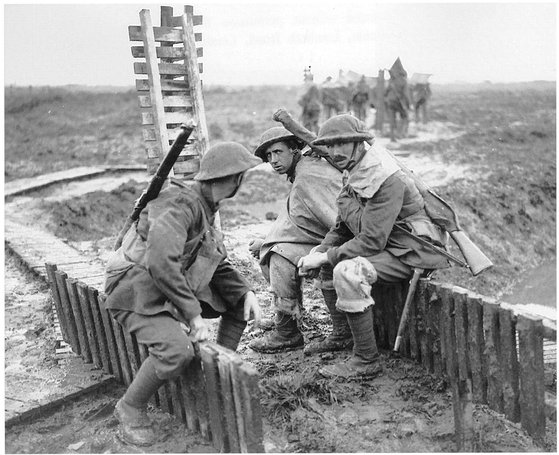
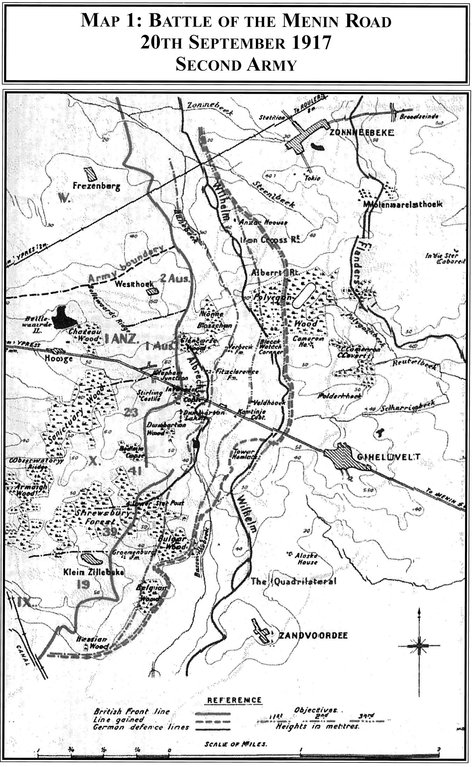
The offensive came to a temporary halt on 28 August, and Plumers Second Army moved into the southern half of the Salient to take over the offensive there, heading for the Gheluvelt Plateau; as the battle progressed his left extended further and further to the left, taking on the responsibility for capturing the Broodseinde Ridge and Passchendaele, securing the right flank whilst Goughs Fifth Army worked its way north eastwards.
The Official History summarises the situation at the end of August,
The casualties alone (68,100 from 31 July - 28 August) do not give the full picture of the situation; for , apart from actual losses, the discomfort of the living conditions in the forward areas and the strain of fighting with indifferent success had overwrought and discouraged all ranks more than any other operation fought by British troops in the War so that, although the health of the troops did not suffer, discontent was general: the soldier hates discomfort more than he fears danger.
What a contrast this comment is to that which the Official Australian Historian makes of the atmosphere on the late morning of 20 September.
It is difficult to recapture the sudden lift of spirits experienced throughout the British side on that battlefield when news spread that the British line again ran across the main heights, through Polygon Wood.
He goes on to say
This success differed from all others in which Australians had yet participated, in that it was part of a well planned series of operations leading definitely towards victory in the war. But, though it caused some rejoicing in England and France , its real importance was probably underrated there; earlier failures had caused the people to be cautious and the governments sceptical.
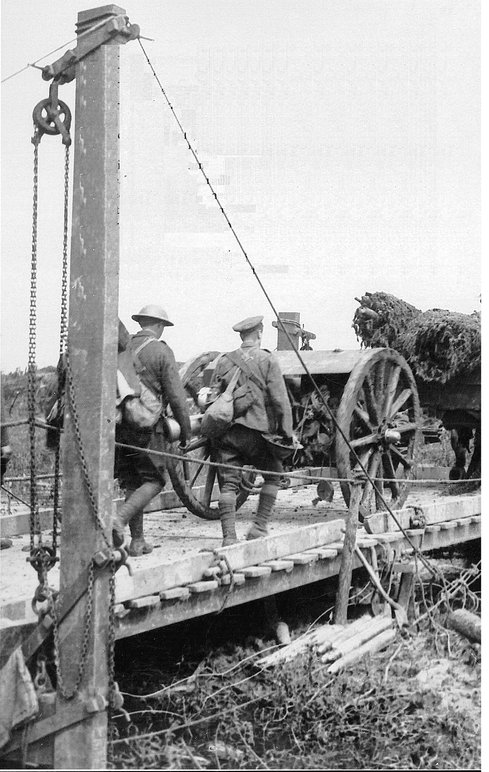
Plumer was given three weeks to prepare his Army for the next phase of the battle. The preparations were extraordinarily methodical and massive in their scale; the main purpose of these efforts was to bring up the artillery, build emplacements and provide the infrastructure to maintain the vast quantities of ammunition that these guns would require. The two main railheads for the supply of ammunition between them could only take a maximum of eleven trains a day, and it was estimated that his plans required 156 trainloads above normal usage. Light railways were laid to bring material up from here closer to the line.
The roads were also a major problem. One way circuits were built, for example at Hooge, made for the most part of planks. This process was assisted by the dry weather, ...the sea of mud in the forward area gradually turned into a brown dusty desert.
The artillery plan was meticulously carried out something that had become a feature of British assaults, at least in the opening phase of a battle, such as at Arras and Messines. However the long pause confused the Germans, who became convinced that the British were moving their effort further south, something that might have been reinforced by the earlier attack, in mid August, of the Canadian Corps against Lens. The Germans became accustomed to a variable barrage, at different times of the day, of different length, and with a variety of ammunition. They appreciated a major attack was imminent as zero came closer, and captured documents from an officer in the early hours of 20 September confirmed this but rather too late for them to put in an effective artillery protective blanket of their own.
Font size:
Interval:
Bookmark:
Similar books «Polygon Wood»
Look at similar books to Polygon Wood. We have selected literature similar in name and meaning in the hope of providing readers with more options to find new, interesting, not yet read works.
Discussion, reviews of the book Polygon Wood and just readers' own opinions. Leave your comments, write what you think about the work, its meaning or the main characters. Specify what exactly you liked and what you didn't like, and why you think so.

